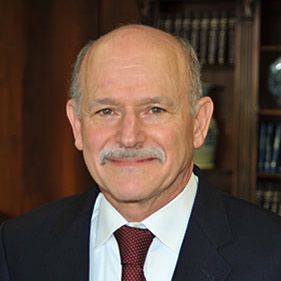Bimagrumab Linked to Dramatic Weight Loss in Patients with Diabetes and Obesity
A phase 2 study suggests treating the common diabetes comorbidity may be capable with the monoclonal antibody.
Steven B. Heymsfield, MD

New research shows inhibition of activin type II receptor (ActRII) by the monoclonal antibody bimagrumab can cut body fat by one-fifth in obese patients, while simultaneously increasing muscle mass.
The phase 2 study was based on patients with type 2 diabetes and obesity, and suggested a possible avenue for pharmacologic management of these patients.
People who are overweight or obese often experience a number of related health impacts, such as insulin resistance and chronic inflammation, explained corresponding author Steven B. Heymsfield, MD, of the Pennington Biomedical Research Center at Louisiana State University, and colleagues.
Excess adiposity is reversible, but the primary method of doing so—lifestyle programs—are often unsuccessful. Other methods of solving the problem include bariatric surgery, but Heymsfield and colleagues said most patients with severe obesity are not good candidates for the procedure.
That has led some investigators to consider possible pharmacologic approaches to the problem. One result of that effort is bimagrumab, a monoclonal antibody that binds to the ActRII receptor to inhibit natural ligands that negatively regulate skeletal muscle growth.
A previous 10-week study in healthy volunteers with insulin resistance found a single dose of the antibody reduced total body fat mass (FM), increased lean mass (LM), and improved insulin sensitivity compared to placebo in subjects who were not dieting.
In the new study, Heymsfield and colleagues sought to see what impact the drug would have on body fat and insulin sensitivity over a longer stretch of time – 48 weeks.
The investigators recruited 75 patients, with 37 randomized into the bimagrumab group and 38 receiving placebo. A total of 58 patients completed the study. The enrollees had an average age of 60.4 years, an average body mass index (BMI) of 32.9, a mean body weight of 93.6 kg, a mean FM of 35.4 kg, and a mean HbA1c level of 7.8%.
The randomized trial was double-blind. Those in the bimagrumab group received intravenous (IV) infusions of the drug at a dosage of 10 mg/kg up to 1,200 mg in 5% dextrose solution every 4 weeks for 48 weeks. Those in the placebo group received only the dextrose solution at the same intervals.
At the conclusion of the study, FM had dropped 20.5% in the bimagrumab group compared to 0.5% in the placebo group. LM increased 3.6% and dropped 0.8% in the bimagrumab and placebo groups, respectively.
Meanwhile, HbA1c levels dropped 0.76% among patients receiving the drug, compared to 0.04% in the placebo group. Body weight dropped by 6.5% in the bimagrumab group, versus 0.8% among those receiving placebo.
Heymsfield noted that earlier studies with animal models had not shown the adipose tissue signal, though the smaller human study had. He said the results of the intervention in the present study were more impressive than expected.
“The magnitude and character (fat loss and muscle gain) of this effect is unprecedented,” he said. “One learning: the best model to study these effects is in humans; typically drug developers can project efficacy from animal models to humans.”
The study also raises bigger questions about the extent to which this type of pharmacologic approach could be used more broadly to counter obesity and related conditions. Heymsfield said the results could spark a push to develop a pill form of the drug, as the formulation in the study was an intravenous infusion.
“Another outcome, already being realized, is a stimulus for basic scientists to unravel the mechanisms of these effects….something that could potentially lead to important new discoveries and drugs,” he said.
In the meantime, Heymsfield said bimagrumab’s IV formulation and the relatively high cost of monoclonal antibodies mean the drug would probably be best suited for people with high-risk obesity-related comorbidities, possibly as an alternative to bariatric surgery.
The study, “Effect of Bimagrumab vs Placebo on Body Fat Mass Among Adults With Type 2 Diabetes and Obesity,” was published online in JAMA Network Open.